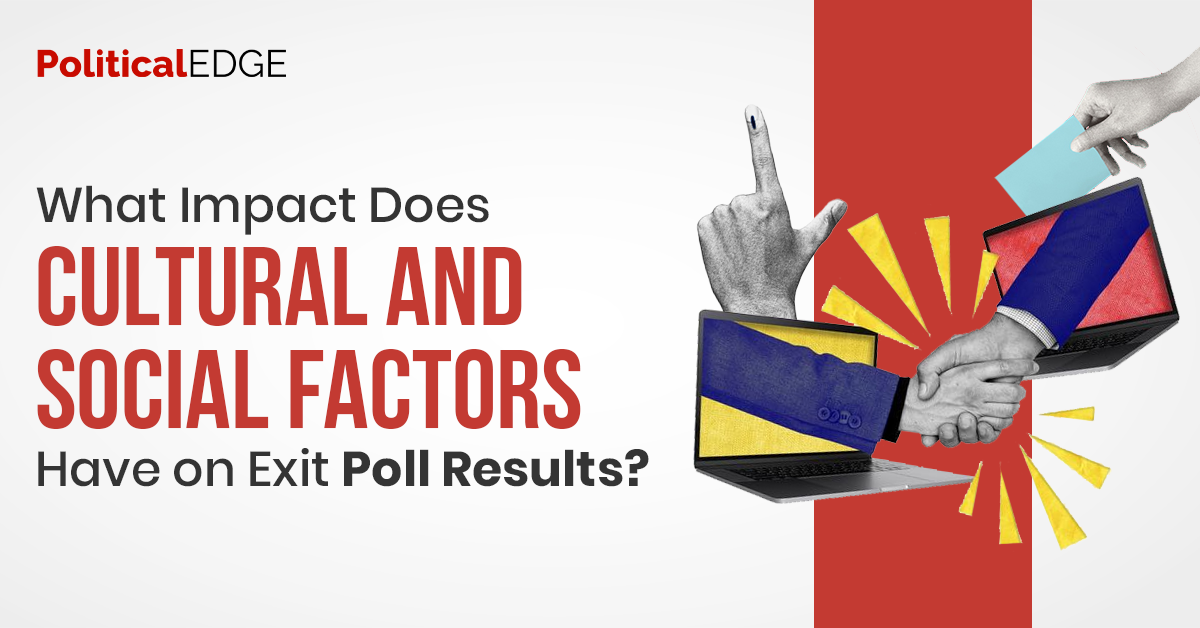
What Impact Does Cultural and Social Factors Have on Exit Poll Results?
Everyone is curious to know which political party will make the government? Will it be the one they personally support? What was the rationale behind their support, and any other information pertinent to their view when it comes time to choose the best candidate. Many surveys are being done through various channels, such as social media or email campaigns, asking people their opinions on impending exit polls or subjects closely related to exit polls.
Every devoted voter is curious to learn the updates of the election with each passing second due to the significance and criticality of exit polls. However, the criticality and accuracy of these exit polls depends on multiple factors including cultural and social factors.
What are Exit Polls?
Exit polls are quite similar to other polls, with the exception that they are conducted after voters leave the polls on election day to learn more about the candidate they voted for. These can be undertaken online or offline, and both aim to forecast the official results. Exit polls are more trustworthy than opinion surveys since they are only done after respondents cast their ballots.
Understanding Cultural Dynamics
Cultural factors constitute a pivotal lens through which to interpret exit poll results. They encompass a multitude of elements, including religious beliefs, historical legacies, regional identities, and traditions that shape the political inclinations of voters. For instance, in countries with diverse ethnic or linguistic communities, exit polls often reflect voting patterns that align with these cultural divisions, indicating a preference for candidates who resonate with the values and aspirations of specific cultural groups.
The Influence of Social Structures
Social factors, on the other hand, intricately intertwined with the fabric of exit poll outcomes. Socioeconomic status, educational attainment, and urban-rural divides significantly impact voting behavior, underscoring the extent to which social disparities influence political preferences. For example, individuals from lower socioeconomic backgrounds may express distinct voting tendencies compared to their wealthier counterparts, manifesting in varying patterns within exit poll data. Similarly, educational levels can play a pivotal role, delineating preferences for candidates or policies that align with different educational strata.
Regional Identities and Political Preferences
Regional identities often wield considerable influence on exit poll results, showcasing how localized sentiments and concerns can drive voting behavior. In nations characterized by regional disparities, exit polls often illustrate voting trends that align with specific regional aspirations and grievances. Candidates who can articulate and address these regional concerns tend to garner greater support in their respective territories, as evidenced by the nuanced insights provided by exit poll data.
Socio – Cultural Factors
Socio-cultural factors play a crucial role in shaping individuals’ voting decisions. These factors encompass a range of social and cultural influences that can shape political orientations and preferences.
Social Identity – People frequently base their voting decisions on the viewpoints and interests related to their racial and ethnic identities. Minority voters may choose candidates or groups who they believe are more sensitive to their concerns about social justice and racial or ethnic equality. Political preferences can also be influenced by group identity and socialization processes within social networks. Political ideals and opinions can be passed down through families, communities, and peer groups, which can affect voting decisions.
Ethnicity and Race – People who identify as members of minority racial or ethnic groups frequently back candidates or political parties who they believe are more sensitive to their concerns about social justice and racial or ethnic equality. Members of underrepresented racial or ethnic groups, for instance, could be more inclined to support laws that deal with discrimination, immigration, or criminal justice reform. Based on similar political objectives, beliefs, and racial or ethnic experiences, members of particular racial or ethnic communities may cast their vote.
Social networks – First of all, social networks offer a platform for the distribution of political information where users may access news stories, editorials, and campaign messaging. Individuals’ political knowledge, attitudes, and preferences may change as a result of exposure to such content, which may then affect how they vote. Second, social networks aid in the processes of social influence and information dissemination. On these platforms, users frequently interact with friends, family, and acquaintances, exposing them to the political beliefs and actions of their social relationships.
Conclusion
Exit polls serve as a crucial barometer for deciphering the intricate interplay of cultural and social factors that shape political landscapes. By delving into the nuances of cultural dynamics, social structures, religious and ethical values, historical narratives, regional identities, and the complexities of interpretation, we can glean invaluable insights into the complex tapestry of voter behavior. Recognizing the profound impact of these factors on exit poll results not only enriches our understanding of electoral processes but also underscores the need for nuanced, context-specific analyses that acknowledge the multifaceted nature of political decision-making.

